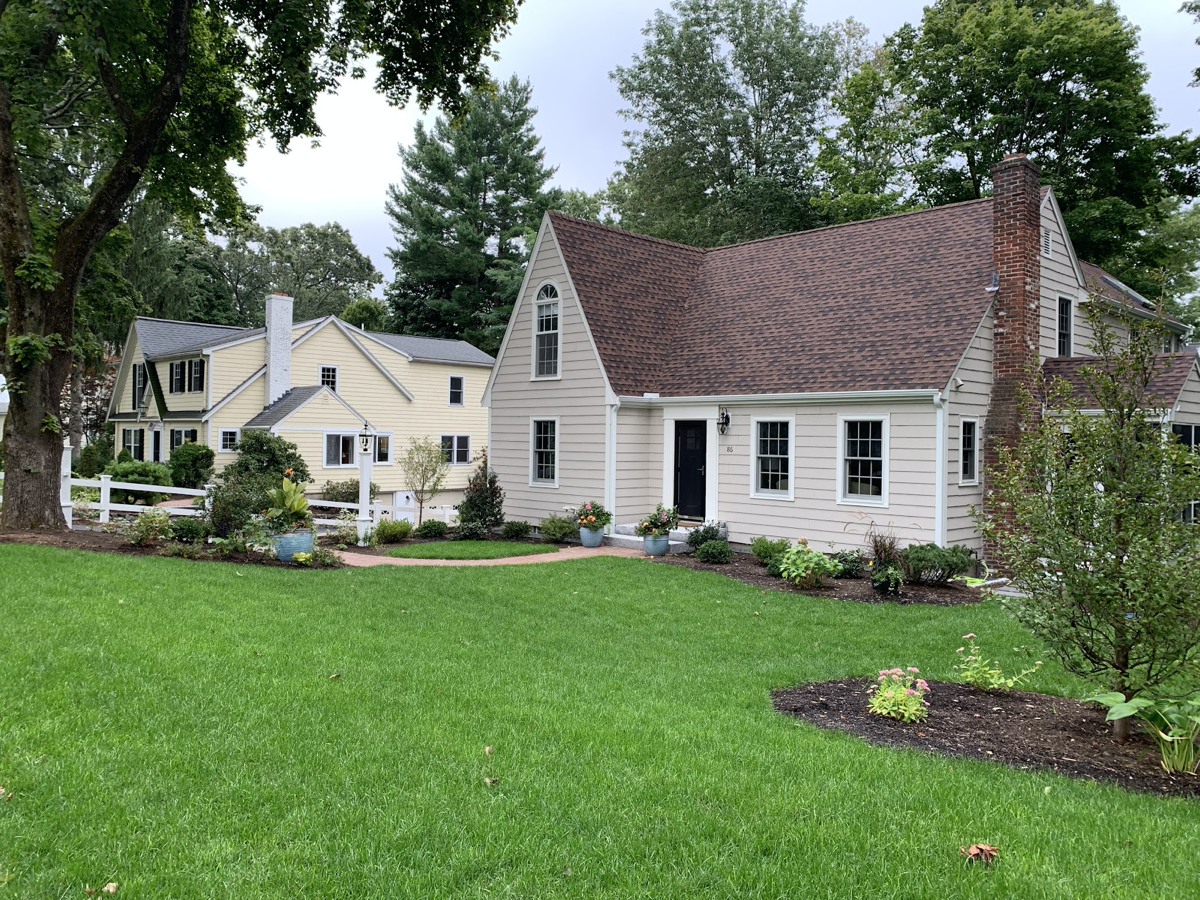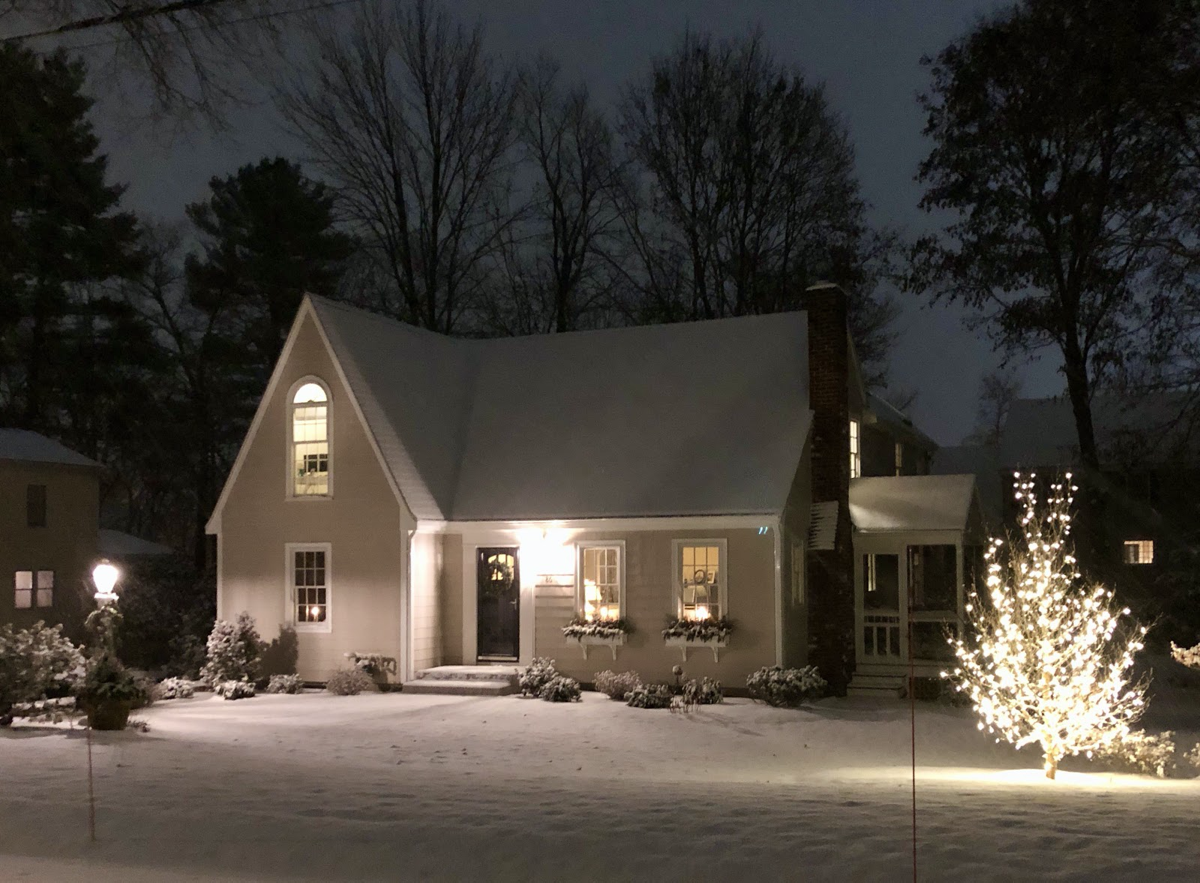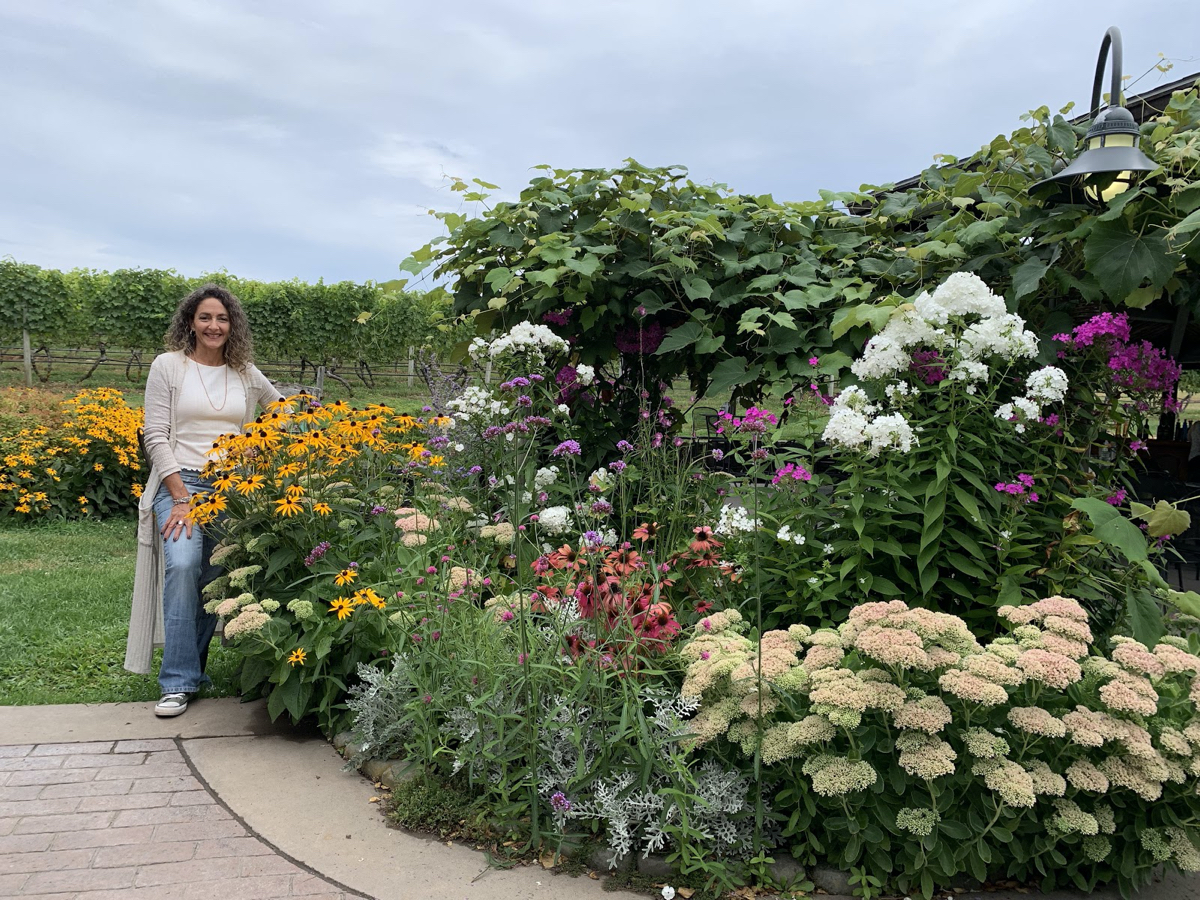Running a landscape business can be tough – keeping up with client needs, fixing finicky equipment, staying on top of what employees need to succeed, and snow that comes on December 1st that puts a halt to fall work, to name just a few of the challenges. Even the home gardener can find it tough going. When the growing season ends - sometimes abruptly - it can be easy to think “Whew! What a year! Time to take a break…” and while some R & R sounds good, the most constructive thing to do is review the year, see what worked and what didn’t, and begin planning things you can do next year to improve.
As I look back on my year, I’m thankful to report that I had a pretty amazing one. Some great projects, happy clients, engaged employees, and some lessons learned that taught me how to be more successful in the years to come. I’d like to share those with you and encourage you to embrace them as well.

Finished landscape project that made everyone from contractor to client smile in the end.
1. Develop a standard operating procedure (SOP). It’s surprising how many people just wing their gardening plan year after year, reinventing the wheel every time they come up against a landscape management problem or gardening task that needs to be accomplished. Much time, effort, and money can be wasted figuring things out over and over again. By developing an SOP for many of the tasks that must be tackled every year you can work faster, more efficiently, and at a higher level, which is what can set the landscape professional apart from the home gardener. Now I get it, this may seem like overkill for a home gardener, but I assure you it will help you keep track of what needs to be done - whether by you OR a landscape professional service provider that works for you.
Download the whitepaper: 7-Steps for Creating a Standard Operating Procedure Outline for Your Landscape Maintenance.
For example, create standard definitions for all the terms you use. One gardener’s definition of, say, “fall cleanup” can be very different from someone else’s. Gardening and landscape management has its share of jargon just like any other industry. In fact, the use of jargon without a clear understanding of what was meant created some confusion this year between me and my workers and clients. When that confusion happens, it’s like slamming on the brakes. Feathers have to be unruffled, the workflow has to backtrack, corrections and clarifications have to be made. By defining terms down to the specific tasks they entail you’re eliminating confusion and ensuring that a complete job is done with happy people in the mix.
Keep in mind that a comprehensive SOP cannot be developed in one sitting. Start by figuring out the biggest, most obvious tasks – such as how you approach your work area, how you direct your helpers, how you start, and what you need -- and work your way down to the smallest items that can trip you up. Allow yourself to think of developing a SOP as an incremental project that you’ll be working on for several years and possibly tweaking forever. And remember, this may be something you’re working on for yourself, or with your landscape company.
2. Encourage critical thinking. As you actively work on getting your SOP in place, you will be building a framework and a set of rules that provide you with the option of following those rules verbatim or bending them when necessary. This kind of decision-making requires everyone to engage in some critical thinking and thoroughly analyze the particular situation being experienced. It’s important to understand that landscape development and fine gardening is a fluid combination of art and science. Not every situation is the same, requiring the same response. Weather, water, nutrients, plants and the interference of humans in all of that, demand critical, informed thinking that will enable you to respond with knowledge and flexibility. A great example is this Sunday/Monday snowstorms that pushed straight into Tuesday. I’m sure many of you have work left undone in your gardens just as we do. How will you manage that? You don’t throw in the towel, you get patient and then you get creative. That’s how we keep work going even when the snow comes early.

The same project - finishing touches of decor and lights and an early snowfall just like icing on the cake.
3. Respond rather than react. When SOPs and critical thinking are absent, you open yourself up to potential problems caused by a lack of understanding. There is a human tendency when faced with a problem to simply react and go for the quick fix. In gardening, the behavior is often to grab a product or tool and take action, any action, that you think might fix the problem quickly. Instead, you should carefully analyze the situation, gather information that will help you respond more effectively and efficiently, and formulate an optimal response that will have a lasting, positive impact in the garden. This is never truer than when dealing with invasive species, pests, and diseases. When we encounter something that is novel and outside our regular experience, human nature often compels us to deal with it as best we can in the moment of need. In reality, we are better served by developing a more thoughtful response that provides better results and avoids the experience of dealing with the same problem again in the future.
4. Learn, learn, learn. There is perhaps nothing more dynamic and ever-changing than gardening and the environment. As the natural world evolves so do gardening conditions and we must be prepared to respond accordingly. That’s why learning is so critical. We must get comfortable with the idea that we should always be researching and learning because there is always something new to absorb. It’s important that we reach out to other gardeners and land grant universities to see what research is in the works and how we can contribute to the body of gardening knowledge. As we try new things, we can share the results with others so they can learn what works and what doesn’t. Remember, none of us will ever have the perfect garden because they are always evolving. The garden of twelve months ago is not the same as the garden of today. Perfection and gardening are mutually exclusive.
5. Slow your roll. With standardized operating procedures in hand, a willingness to engage in critical thinking, and the desire to always be learning, it’s time to slow things down and fully embrace these concepts. We’re now in a better position to respond more thoroughly and effectively and ditch the urge to react quickly. Landscape development and management and proper gardening is a long game. A lot of the benefits gained from utilizing the four tips presented above will continue to show up years down the road. With the improved mindset developed from embracing these five lessons, the landscapes you’re managing will be more functional and beautiful in the long run. That will be a welcome improvement over quick fixes or simply ignoring the critical tasks that need to be done. Best of all, you’ll avoid being blindsided by the cumulative effects of knee-jerk reactions and the lack of proper care.

TWEETABLE TIP
It’s important to understand that landscape development and fine gardening is a fluid combination of art and science. Not every situation is the same, requiring the same response. You must use critical thinking!
VIA @GardenContinuum

Each of the lessons outlined here will take time to properly implement. These are not overnight fixes. You’ll need to train your mind, and your service providers, away from the quick fixes and take some time to outline some best practices for your landscape. It will take a little work and the winter season is a great time to get started.
Learn about Fine Gardening by downloading the free eBook titled "The Fine Gardeners Guide to a Beautiful and Luxurious Landscape" today.









Leave a comment